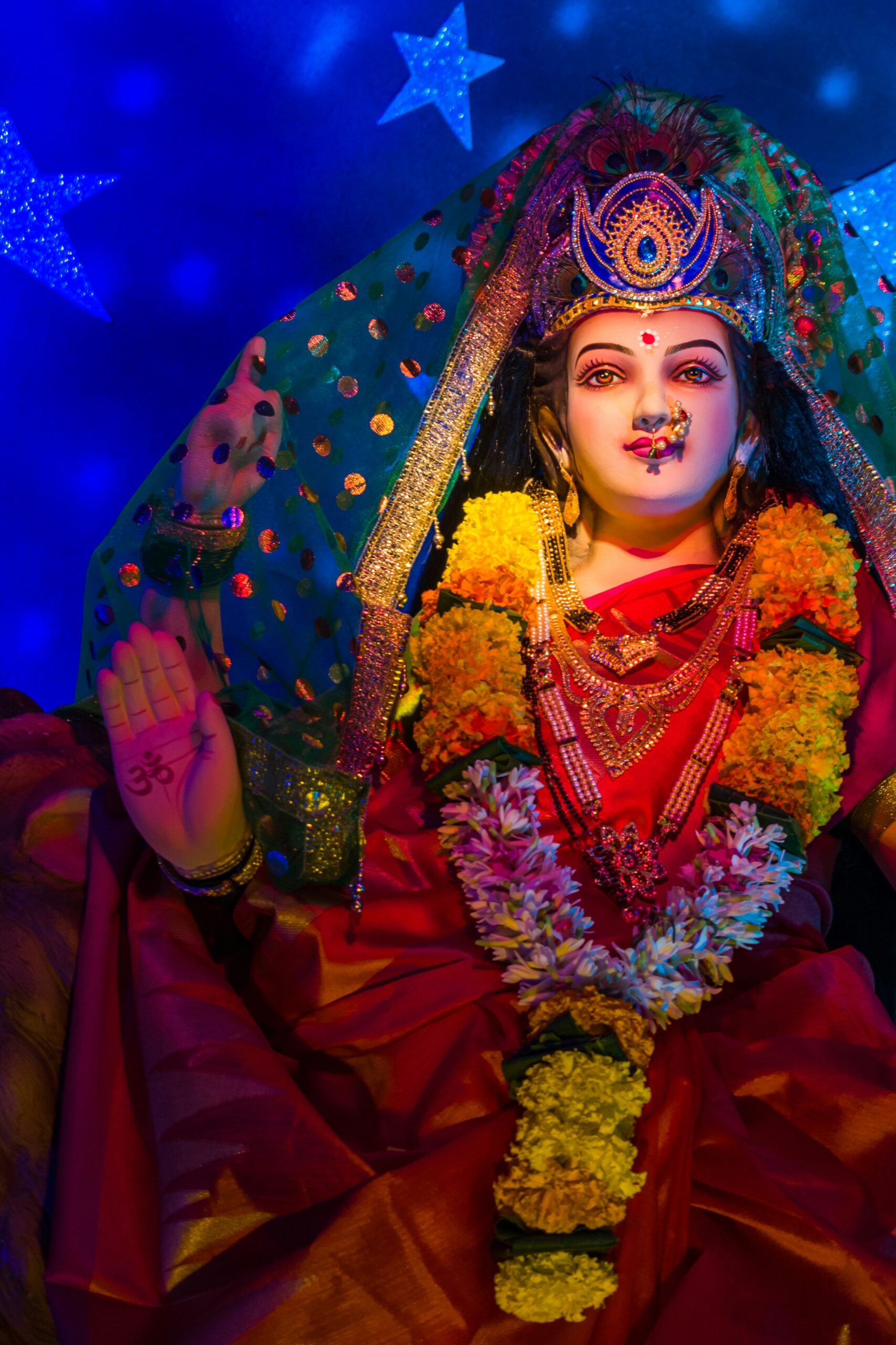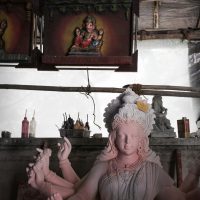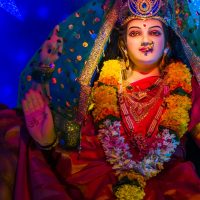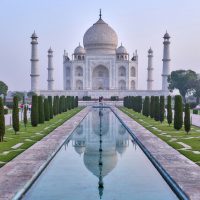
Introduction to Navratri and Its Significance
Navratri, a significant Hindu festival, is celebrated with great fervor across India and by the Indian diaspora worldwide. Spanning nine nights, this vibrant festival is dedicated to the worship of Goddess Durga, the embodiment of feminine strength and power. The name ‘Navratri’ translates to ‘nine nights,’ denoting the nine forms of the goddess that devotees honor through various rituals and festivities. This period is not only a time for religious observance but also serves as a celebration of life, renewal, and a cultural showcase of India’s diverse traditions.
The historical significance of Navratri can be traced back thousands of years, rooted in ancient Hindu scriptures and mythology. It marks the victory of Goddess Durga over the buffalo demon, Mahishasura, symbolizing the triumph of good over evil. This narrative highlights the essential theme of empowerment and victory that resonates deeply with the spirit of the festival. Many regions in India have their unique ways of celebrating Navratri, incorporating local customs and traditions, which adds to the rich tapestry of cultural diversity present in the country.
Navratri embodies themes of devotion and renewal, prompting individuals to engage in self-reflection and spiritual growth. Throughout the festival, devotees participate in fasting, prayers, and various forms of artistic expression like dances and music, increasing the feeling of community and celebration. Garba and Dandiya Raas are popular dance forms associated with Navratri, particularly in the western states of Gujarat and Maharashtra. These activities allow people of all ages to come together, fostering a sense of inclusivity and joy, making Navratri not just a religious event but a spirited festival that rejuvenates the bonds of community and kinship.
PM Modi’s Message of Unity and Prosperity
During the celebration of Navratri, Prime Minister Narendra Modi took the opportunity to address the nation, emphasizing the importance of unity among the diverse cultures that define India. In his message, PM Modi highlighted that festivals such as Navratri are not just occasions for celebration but also serve as a reminder of the strength that lies in diversity. He articulated the idea that it is the rich tapestry of various traditions and customs that makes India unique, and this unity is essential for the nation’s collective progress.
In the spirit of festivity, the Prime Minister conveyed heartfelt wishes for prosperity, peace, and well-being to every citizen of India. By reaching out to people from different backgrounds and communities, he aims to inspire a sense of togetherness, fostering an environment conducive to mutual respect and understanding. The message is clear: in embracing our individual identities while celebrating our common values, we can strengthen the bonds that hold our society together.
Additionally, PM Modi’s address serves as a reminder that festivals are opportunities for reflection and gratitude. He encouraged citizens to engage in acts of kindness and service during these auspicious days, thereby nurturing a culture of empathy and support. The festive season can be a catalyst for positive change, allowing individuals to extend their heartfelt contributions to society, regardless of their backgrounds.
By framing his message within the context of unity and prosperity, PM Modi invites all Indians to partake in the essence of Navratri. This call to collective celebration resonates at a time when the nation aims to move forward together, ensuring that every individual is part of the journey towards a brighter and more prosperous future.
The Celebration of Festivals: A Cultural Mosaic
The vibrant tapestry of Indian culture is intricately woven through its festivals, especially during the auspicious occasion of Navratri. This nine-night festival, dedicated to the worship of Goddess Durga, is celebrated with great enthusiasm across the nation. Each state in India has developed unique customs, rituals, and traditional attire that bring their regional flavors to the occasion, showcasing the diversity and unity that India proudly embodies.
In Gujarat, the celebration takes on a lively dimension with the traditional Garba dance, where men and women come together in colorful attire, performing synchronized circular dances around an idol of the Goddess. The sounds of dandiya and folk songs fill the air, creating a festive atmosphere that attracts participants of all ages. In contrast, the celebrations in West Bengal highlight the grandeur of Durga Puja, where elaborate idols, artistic decorations, and community gatherings create a vibrancy that captivates locals and tourists alike.
Moreover, the North Indian states, particularly Uttar Pradesh and Punjab, have developed their distinct interpretations of Navratri, often incorporating folk traditions into their celebrations. Here, people observe fasts, perform rituals, and engage in vibrant processions adorned with traditional attire that resonates with the spirit of devotion. In southern states, temples come alive with festivities that honor both the goddess and the joy of community participation, illustrating the integral role of spirituality in these gatherings.
As these widespread celebrations unfold, other festivals such as Dussehra and Diwali further enrich the festive landscape, each embodying their own significance, yet all echoing the underlying themes of triumph, light, and unity. The multifaceted nature of these observances reflects India’s cultural mosaic, reminding everyone of the shared values and beliefs that bind its people, regardless of their origin.
The Role of Festivals in Promoting Community Spirit
Festivals have long served as pivotal moments for communities, acting as catalysts for social interaction, collaboration, and the collective celebration of cultural heritage. Events such as Navratri, with its vibrant displays of devotion and unity, exemplify how these festivities can strengthen community ties. During such celebrations, individuals from diverse backgrounds come together, transcending barriers of age, caste, and understanding, ultimately fostering a spirit of inclusiveness.
The essence of festivals lies in their ability to promote shared experiences. These occasions encourage communities to engage in traditional practices, whether through dance, music, or elaborate rituals, allowing participants to honor their shared values and beliefs. This communal engagement reinforces social bonds and cultivates mutual respect among individuals, as everyone actively partakes in the joyous atmosphere. The celebration of festivals like Navratri inspires people to display their cultural pride and embrace the traditions that define their communities.
Moreover, festivals serve as a platform for collaboration, where residents actively contribute to the organization and execution of events. Community members often unite in preparation, whether it be organizing local events, decorating venues, or arranging food and entertainment. This joint effort cultivates a sense of belonging and ownership, bridging interpersonal gaps and constructing lasting relationships. In essence, the act of coming together for a common purpose nurtures a collaborative spirit that is essential for any thriving community.
In conclusion, the role of festivals in promoting community spirit cannot be overstated. They not only provide a backdrop for social interaction but also encourage active participation and mutual respect. As communities celebrate these collective moments, they reinforce the values of unity and belonging, essential qualities for a cohesive society. The joy and exhilaration of festivals like Navratri ultimately reflect the strength of community bonds, reminding us all of the power of collective celebrations in honor of our cultural heritage.
PM Modi’s Encouragement for Cultural Engagement
Prime Minister Narendra Modi has consistently emphasized the importance of cultural engagement during significant festivals such as Navratri. He recognizes that these events provide a unique opportunity for citizens to connect with their heritage and participate in traditional practices that define the rich tapestry of Indian culture. Through his various addresses and initiatives, PM Modi encourages individuals and communities to immerse themselves in the vibrancy of local art forms, music, dance, and cuisine.
One of the pivotal initiatives introduced by the government is the promotion of local art forms, aimed at rejuvenating traditional crafts and performances. For instance, the ‘One District, One Product’ scheme encourages the revival and support of specific handicrafts and artisanal foods from various regions. This initiative not only preserves cultural identity but also uplifts local artisans by placing their work in the national and international spotlight. In his speeches, PM Modi calls upon citizens to explore and appreciate these art forms, thereby enhancing community engagement during festivals.
Moreover, the Prime Minister has leveraged digital platforms to promote cultural awareness. By encouraging citizens to share their celebrations and arts online, the government has created a sense of solidarity and visibility around the diverse cultural expressions found throughout the country. Events such as regional food festivals and cultural fairs have also been organized, showcasing a plethora of culinary delights and traditional performances. This not only boosts local tourism but also instills a sense of pride in one’s roots.
In conclusion, PM Modi’s encouragement for cultural engagement during festivals serves as a powerful reminder of the significance of heritage in contemporary society. By actively participating in these cultural practices, citizens can cultivate a deeper appreciation for their traditions, ultimately contributing to the preservation and evolution of India’s diverse cultural landscape.
Digital Celebrations: Navigating Modern Festivities
In recent years, technology has reshaped the way we celebrate traditional festivals, including Navratri. With the advent of digital tools, individuals and communities have discovered new avenues for participating in cultural events, fostering connections while embracing safety measures. The impact of technology on celebrations has been profound, especially amid the ongoing necessity for social distancing and health awareness.
Virtual events have emerged as a viable solution for maintaining festive spirit without physical gatherings. For instance, many families now organize online poojas and religious ceremonies, allowing participants to join from the comfort of their homes. This shift to digital gatherings facilitates inclusivity, enabling individuals who might otherwise be unable to attend due to distance or health concerns to partake in the festivities, thus preserving the essence of celebration.
Social media platforms also play a crucial role in enhancing the festive experience during Navratri and other festivals. People utilize these platforms to share their experiences, from dressing up in traditional attire to showcasing their celebrations with family members. The use of hashtags and engaging content helps amplify the joyous spirit of these festivals, allowing users to connect with a wider audience and fostering a collective sense of belonging despite physical separation.
Moreover, various apps and online tools have been developed, designed specifically to host interactive experiences related to festivals. For instance, live-streaming events, devotional music channels, and virtual dance competitions have become prominent, providing entertainment and engagement during traditional celebrations. These innovations not only support social interaction but also promote cultural exchange among diverse communities worldwide.
As we embrace these changes, it becomes clear that the fusion of technology and tradition is not just a response to contemporary challenges, but a vibrant evolution of how we celebrate and nurture our cultural heritage. Digital celebrations, therefore, enable a unique blend of reverence and modernity, keeping the spirit of joy alive in times of uncertainty.
The Spirit of Giving: Social Initiatives during Festivals
The festival season, especially during Navratri and other significant celebrations, inherently embodies a spirit of giving and compassion towards the less fortunate. This period serves as a reminder of the importance of collective kindness, fostering a sense of community while encouraging individuals to contribute positively. During these vibrant celebrations, numerous social initiatives emerge, focusing on philanthropy and support for those in need, thereby enriching the festive experience for both the givers and receivers.
Non-governmental organizations, local communities, and even individuals unite during this time to launch various charity events. These initiatives may include food drives, clothing donations, and financial contributions directed towards underprivileged groups. For instance, many Navratri celebrations incorporate the practice of distributing prasad or meals to those who are unable to afford sufficient sustenance, showcasing a tangible expression of compassion inherent in these festivities. The essence of the festive spirit lies in acknowledging those less fortunate and making a conscious effort to enhance their well-being during this joyful time.
Moreover, many businesses participate in social responsibility efforts during festivals by donating a portion of their revenue to charitable organizations. This collaboration not only highlights the spirit of giving but also encourages customers to engage in philanthropy, turning their purchases into acts of kindness. Such initiatives reflect the broader societal commitment to uplifting individuals facing hardship and demonstrating that the celebration of joy and abundance can seamlessly intertwine with the act of generosity.
As communities continue to embrace and promote these charitable efforts, the impact of social initiatives during festivals becomes increasingly significant. Engaging in acts of kindness during this time not only enhances the festive spirit but also fosters a lasting culture of empathy and support, essential in cultivating a more compassionate society.
Environmental Awareness during Festivities
The celebration of festivals holds immense cultural significance in India, and Navratri, dedicated to the worship of Goddess Durga, is no exception. However, as we embrace the joy and fervor of these festivities, it is crucial to turn our focus towards the environmental impact of our celebrations. With growing awareness about climate change and ecological disturbances, it becomes imperative to promote sustainable practices during these vibrant festivities.
One of the primary areas where sustainability can be integrated is in the decorations used during Navratri. Traditionally, colorful decorations often rely on non-biodegradable materials. Encouraging the use of natural or biodegradable alternatives can significantly reduce waste. For instance, opting for cloth banners, clay idols, and organic materials can help foster an environmentally-friendly atmosphere. Incorporating plants and flowers that are locally sourced can also significantly lessen the carbon footprint associated with transportation.
The festivities should also extend to conscious choices regarding food. Hosting gatherings with an emphasis on local, organic ingredients not only supports local farmers but also minimizes the negative impact of mass-produced items. Moreover, promoting vegetarian or vegan options aligns with reducing environmental strain while still providing delightful culinary experiences.
Government campaigns, such as the ‘Swachh Bharat Abhiyan,’ align perfectly with the theme of our festivals, urging citizens to take responsibility for cleanliness and ecological health. Such initiatives encourage communities to come together for cleaning drives post-festivities, thereby instilling a culture of hygiene and respect for nature. In addition, various local governments and NGOs are advocating for awareness programs that highlight the importance of eco-friendly approaches during major festivals.
As the nation rejoices in the spirit of Navratri and other festivals, embracing sustainability should be at the forefront of our celebrations. By adopting responsible practices, we can honor our traditions while safeguarding the environment for future generations.
Conclusion: Embracing the New Enthusiasm
As PM Modi greets the nation during the vibrant season of Navratri and various festivals, the message resonates with the importance of unity and collective enthusiasm. This period of celebration is not just a time for individual revelry, but also an opportunity to reinforce community bonds and cultural heritage. Festivals such as Navratri serve as a reminder of our rich traditions, fostering a sense of belonging and togetherness among people from diverse backgrounds.
The festive spirit articulated by the Prime Minister underlines the need to engage in these celebrations with joy and respect for long-standing customs. Each festival symbolizes the triumph of good over evil, embodying values that are crucial for the social fabric of our society. By participating in the celebrations, individuals contribute to a harmonious atmosphere that honors the collective identity of the nation, while also embracing the differences that make us unique.
Encouraging a spirit of inclusivity, PM Modi’s message reminds us that the essence of these festivals lies in shared experiences and mutual respect. Collectively embracing this new enthusiasm can lead to deeper connections among communities, enhancing understanding and appreciation of various traditions. Let us partake in this festive season with a commitment to celebrate not just our individual beliefs, but also those of others, thereby promoting a harmonious experience.
In conclusion, as we celebrate this vibrant season, let us honor the spirit of unity and joy that PM Modi advocates. By coming together, we can ensure that the essence of our festivals is felt by all, fostering a culture of respect and celebrating the diverse tapestry that enriches our nation.







